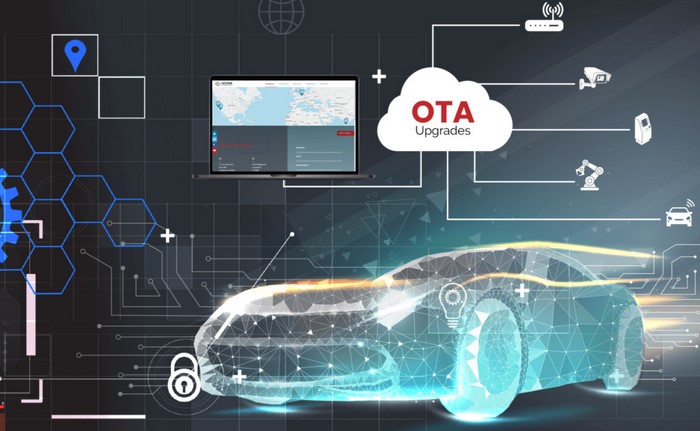

Delay OTA is a revolutionary technology that enables automotive software to be updated over-the-air (OTA) with a delayed release. This technology allows automakers to update their vehicles with the latest software without having to physically visit the dealership or service center. With Delay OTA, automakers can ensure that their vehicles are running the most up-to-date software, while also providing customers with the convenience of not having to wait for a service appointment. Delay OTA also provides automakers with the ability to test and validate software updates before they are released to the public, ensuring that the updates are safe and reliable. This technology is quickly becoming an essential part of the automotive industry, and is revolutionizing the way automakers update their vehicles.
How Automotive Software Companies are Leveraging Delayed Over-The-Air Updates to Improve Vehicle Performance
In recent years, automotive software companies have been leveraging delayed over-the-air (OTA) updates to improve vehicle performance. OTA updates are a form of software delivery that allows for the remote installation of updates to a vehicle’s onboard computer systems. This technology has enabled automotive software companies to provide timely updates to vehicles, without the need for a physical visit to a service center.
OTA updates can be used to improve a variety of vehicle performance metrics, including fuel efficiency, emissions, and safety. For example, OTA updates can be used to adjust engine parameters to improve fuel efficiency, or to update the vehicle’s software to reduce emissions. Additionally, OTA updates can be used to install new safety features, such as lane departure warnings or automatic emergency braking.
OTA updates can also be used to improve the user experience of a vehicle. For example, OTA updates can be used to add new features to the vehicle’s infotainment system, such as new apps or improved navigation. Additionally, OTA updates can be used to fix bugs and improve the overall performance of the vehicle’s software.
The use of OTA updates has several advantages over traditional methods of software delivery. First, OTA updates are much faster than traditional methods, as they can be installed in a matter of minutes. Additionally, OTA updates are more cost-effective, as they do not require a physical visit to a service center. Finally, OTA updates are more secure, as they can be encrypted and authenticated to ensure that only authorized updates are installed.
In conclusion, automotive software companies are leveraging delayed over-the-air updates to improve vehicle performance. OTA updates can be used to improve a variety of performance metrics, including fuel efficiency, emissions, and safety. Additionally, OTA updates can be used to improve the user experience of a vehicle, by adding new features and fixing bugs. The use of OTA updates has several advantages over traditional methods of software delivery, including speed, cost-effectiveness, and security.
Exploring the Benefits of Delayed Over-The-Air Updates for Automotive Software Security and Reliability
The automotive industry is increasingly reliant on software to power its vehicles, and the security and reliability of this software is of paramount importance. As such, the industry is exploring the potential benefits of delayed over-the-air (OTA) updates for automotive software security and reliability. This paper will discuss the advantages of delayed OTA updates for automotive software security and reliability, and how they can be implemented in a safe and effective manner.
Delayed OTA updates offer a number of advantages for automotive software security and reliability. Firstly, they allow for the implementation of security patches and other updates in a timely manner, without the need for a physical visit to a service center. This reduces the risk of malicious actors exploiting known vulnerabilities in the software, as the updates can be applied quickly and efficiently. Secondly, delayed OTA updates can be used to test new software versions before they are released to the public, allowing for any potential issues to be identified and addressed before they become a problem. Finally, delayed OTA updates can be used to ensure that the software remains up-to-date and reliable over time, as new features and bug fixes can be applied without the need for a physical visit to a service center.
In order to ensure that delayed OTA updates are implemented in a safe and effective manner, a number of measures must be taken. Firstly, the software must be designed with security in mind, with robust authentication and encryption protocols in place to protect against malicious actors. Secondly, the OTA update process must be carefully monitored and tested to ensure that it is secure and reliable. Finally, the OTA update process must be regularly reviewed and updated to ensure that it remains secure and reliable over time.
In conclusion, delayed OTA updates offer a number of advantages for automotive software security and reliability. They allow for the timely implementation of security patches and other updates, as well as the testing of new software versions before they are released to the public. In order to ensure that delayed OTA updates are implemented in a safe and effective manner, the software must be designed with security in mind, the OTA update process must be carefully monitored and tested, and the process must be regularly reviewed and updated.Delay OTA is a promising technology for automotive software updates. It provides a secure and reliable way to update vehicles with the latest software, while also allowing for a more gradual rollout of updates. This ensures that any potential issues can be identified and addressed before they become widespread. Delay OTA also offers a cost-effective solution for automakers, as it eliminates the need for costly recalls and service visits. With its many advantages, Delay OTA is likely to become an increasingly popular choice for automotive software updates in the future.